-
What Does It Mean for a Home if an Inspection Reveals Mold?
Are you planning on buying a house? If so, then checking it for mold should be considered essential. If you recently scheduled a home inspection in San Francisco , then you may be wondering what happens if the home inspector finds mold. Watch this video to learn what it can mean if the home that you’re thinking of buying comes back positive for mold.
The good news is that even bad cases of household mold can be handled. Today, the technology exists which allows mold remediation teams to perform successful mold removal in homes that have been taken over by fungus and may seem like a lost cause. If your home inspection reveals mold, then it’s important to realize that with the right treatment, the building can be restored.
-
What Happens During an Indoor Air Quality Test?
Are you planning to test your home’s air quality in San Francisco? If so, then you may be wondering about the testing process. Indoor air quality, or IAQ, testing can be used to measure several factors that could be affecting your home’s air quality. The following are some of the things that you can expect depending on the type of test being performed.
Mold Testing

When a team comes out to your home to test for mold, they will begin the process by taking either a surface or air sample or both. This initial test will provide the IAQ testing team with information about your indoor air environment and if it is conducive to mold growth. Also, the sample will alert the team to discernable levels of mold and their types, if they are present. After this testing process, if mold is identified, then you can proceed to contact a mold remediation company about its removal and abatement from your home. Following the remediation, it can be a smart decision to retest your home for mold to ensure that the removal was successful.
Asbestos Testing
Before you take on any type of home remodel, experts advise that you have you home tested for asbestos if there is any chance that the building’s materials might contain this mineral. Asbestos cannot be identified visually, and testing by a certified professional is required to determine its presence in your home. Material samples will be taken from areas of your home and sent to a lab for testing.
Bacteria Testing
Bacteria testing is often used following plumbing issues that cause sewage contamination. If bacteria testing is part of your upcoming indoor air quality test, then there are several things that you can expect from the process. First, the inspector will perform a visual inspection, and will then take surface samples to verify the absence of bacteria known to be in sewage. If the samples indicate that the sewage remediation was unsuccessful, then you will need to contact the remediator about additional cleaning.
-
Top Reasons to Schedule IAQ Testing Before Renovating Your Home
Every day, your home’s indoor air quality, or IAQ, can have a significant effect on your family’s comfort and health. However, it is particularly important to consider your IAQ before beginning any renovations. If you are planning a home renovation in San Francisco, then there are several good reasons for you to schedule indoor air quality testing before you get started.
To Address Moisture
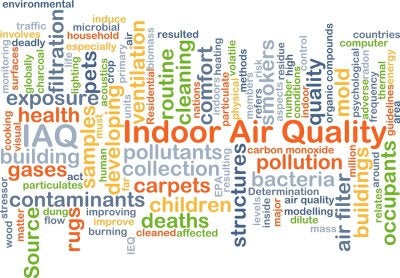
One popular home remodeling option is to convert a basement into a living space. If you are thinking about furnishing your basement, for example, then indoor air quality testing should be considered an essential part of the initial planning process. Basements are areas that are particularly vulnerable to moisture problems. If your basement is affected by high humidity or water leaks, then this can cause mold growth and attract pests into the space. Before you take on any type of remodeling project, have the air tested so that you can address any moisture problems first.
To Add Ventilation
Having a proper ventilation system is crucial for ensuring your family’s comfort and maintaining your indoor air quality. If you are planning to remodel an area of your home, then consider having an IAQ test performed first to determine how well it is ventilated. If the ventilation is lacking, then the remodeling project can provide you with an excellent opportunity to remedy the situation.
To Control Mold
Mold is a common cause of IAQ problems, and it’s not uncommon for it to grow undetected in homes until it starts causing health problems for those who live there or growing into a visible location. While mold can continue to spread on its own without much assistance, a home remodeling project can dislodge spores and allow them to spread the mold throughout your home. To help prevent turning a mold problem into a bigger one and to identify any mold problems that your home already has, consider scheduling IAQ testing before you begin your next home renovation.
-
The Link Between Renovating and Indoor Air Quality
When planning your home renovation project near San Francisco, you are probably busy looking at paint colors, new appliances, and your future decorating scheme. These are important choices to make, but your indoor air quality is just as important to consider. You may not realize that performing renovations on your home may result in future breathing problems for you or your family. Continue reading to learn more about the link between your indoor air quality and your home renovations .
Updating Outdated or Banned Materials
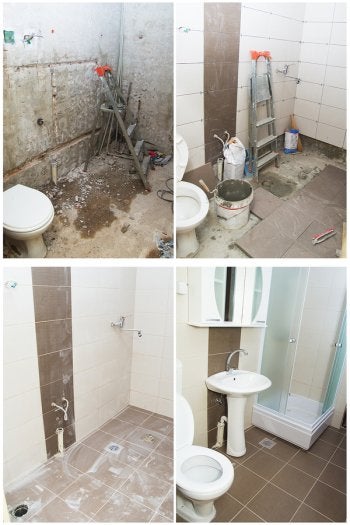
During your renovation project, you may be updating your bathroom or kitchen with better and newer appliances. However, you must also look to the flooring, painting, and other building materials that were used in addition to your older appliances. Some building materials, such as paint, may contain banned substances, like lead, that could cause significant health problems. If you are updating a bedroom or living room, then consider the age of the flooring. Outdated carpeting may not only be displeasing to the eye, but you may have poor indoor air quality from it too.
Staying Protected While Renovating
While you are doing any sort of home remodeling, you should remain protected at all times. If you are working in an attic or crawlspace, then wear a mask to protect yourself from breathing in dust or other harmful contaminants. In the event you are working with wood or building materials—such as hanging drywall or knocking down walls—then wear a breathing mask to avoid inhaling drywall and wood dust. You must keep yourself protected however possible when performing home renovations.
Testing Air Quality Before Renovating
Proactively testing the indoor air quality before renovations is another smart way to prevent health problems in the future. Professional technicians can test your indoor air quality to locate potentially harmful bacteria, such as mold or asbestos. They can also help you choose the right building materials and products to ensure your home renovations are safe. These services are essential to performing a healthy and safe remodeling project.
-
Why Choose Healthier Materials for Your Remodel?
Just as you are probably choosing more energy-efficient appliances, you will benefit most by choosing healthier building materials during your house remodel. Healthier home renovations near San Francisco will result in a more enjoyable remodeling project and a better environment for you and your family to live in. Here is a quick look at some healthy materials to use for your home remodeling and why you can benefit most by choosing them:
There are certain materials that have been deemed as “volatile organic compounds,” also called VOCs. These materials should be avoided at all cost during your home remodeling project. Products filled with VOCs can cause harmful off-gassing after your renovation is complete, which may result in health problems. You should also choose building materials that prevent mold and bacteria growth. Many flooring and paint materials offer this benefit, and it is healthier to choose these for your next home remodeling project. Mold, mildew, and other bacteria can cause a significant amount of respiratory problems, including increased asthma symptoms, allergies, and even cancer. Choose healthier home renovation materials to ensure you have a healthy renovation and future.
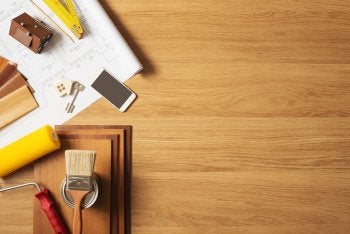
-
A Look at the Five Indoor Air Quality Categories as Defined by the EPA
Home renovations and new constructions are using better and more insulated materials than ever before. However, these same materials could also be causing poorer indoor air quality in San Francisco and around the country, according to the Environmental Protection Agency, or EPA. Watch the video for a more in-depth look at five indoor air quality concerns .
- Carbon monoxide, even in low doses, can cause headaches, fatigue, and dizziness.
- Microbial growths, like mold and bacteria, can cause asthma, headaches, and more severe health problems.
- Allergens, such as pollen and dust, can cause allergy symptoms.
- Infectious diseases, like colds or flus, can continually circle through a home’s HVAC system.
- Home remodeling materials, gases, and pesticides all fall under the toxic compounds category.
Homebuilders and renovators should strive for healthier home renovations by using healthier materials. They should also have professional air quality testing performed.
-
How You Can Benefit from Testing a Home’s Air Quality Before Buying
Your home inspection should include a thorough indoor air quality test before you officially purchase your new home. This home inspection in San Francisco can tell you a number of features you may not know before buying a house , such as if mold is growing and other dangerous air quality issues.
You can locate future problem areas.
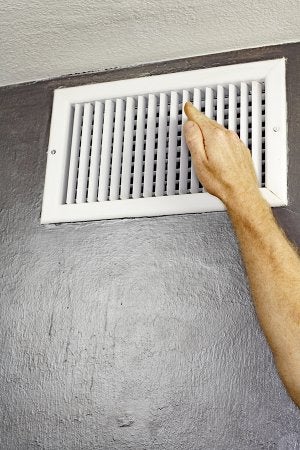
Many homes may have certain areas of the house, such as the bathroom, that may be hotspots for the occasional mold growth or bacteria buildup. There may be a ventilation register or section of the HVAC system that has reduced airflow. These are not reasons to back out of buying your dream home. However, they are good traits to know as you go through buying a house, and they can only come with an indoor air quality test. You can then make the decision to remodel those areas after you have purchased the home.
You can back out before purchasing an unsafe home.
On the other hand, there are some houses that have a host of problems, including extensive mold growth, gas leaks, plumbing problems, and many more. Unless you are looking for a fixer-upper house, you should not be pulled into purchasing an unsafe home. A thorough home inspector will test the home’s air quality, plumbing, electricity, and all other utilities to ensure the house is safe for you and your family. If it is deemed unsafe or has too many damages, then you can find out before you move in.
You can learn more about your future home.
Even though you are likely to receive a lot of history from your realtor or the former owners, there are certain features of a new home that can only be answered with a home inspection. You may find out where there were previous mold problems or if fire and smoke damage had ever occurred. These are just a few of the many benefits you will find when an inspector performs an indoor air quality test.
-
Exploring the Contaminant Testing Process
Whether you are buying a new house, planning a home renovation, or want to improve the comfort of your home, testing a house’s indoor air quality in San Francisco is a smart decision. These thorough evaluations can alert you to problems that affect the safety of the building’s air, allowing you to address any issues as needed.
When a house is tested for contaminants such as asbestos, lead, and mold, the process usually involves several steps. First, an experienced team arrives at the home and conducts an extensive inspection, during which the members will search for any areas that could harbor contaminants that might affect the house’s indoor air quality.
After evaluating all areas of the building, the team will carefully obtain samples of any suspect materials. Next, the samples are sent to a lab for testing and identification. Finally, the testing company will report the findings to you and discuss any recommended treatment or abatement services to improve the home’s indoor air quality.
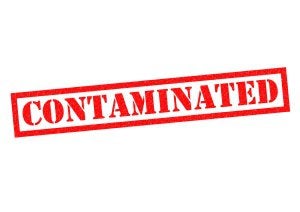
-
Reasons to Talk to Your New Construction Contractor About Air Quality Testing
When planning a home renovation near San Francisco, you have a lot to consider regarding the project’s design. In addition to dimensions, layout, and style, the effect of the remodel on your indoor air quality , or IAQ, should be factored into your decisions. During new construction, there are several reasons why you should talk to your contractor about your home’s air quality.
To Make the Most of Your Home Remodel

Whether your house is new or old, there may be existing materials that are affecting your family’s health. If it is poor, the quality of your indoor air can cause allergic reactions, discomfort, and even illness for anyone residing in the home. A renovation, however, gives you the ideal opportunity to address the construction of your home in a way that improves your IAQ. After having an air quality test performed, talk with your contractor about any areas you’d like to remove or repair to address any IAQ issues.
To Remove Unhealthy Materials from Your Home
Home remodeling gives you the chance to tear out or contain any dated, damaged, or unhealthy materials that may be affecting your IAQ. For older houses, lead and asbestos are common issues that homeowners face during a remodel. Also, bacteria, mold, and mildew can develop in both newer and older homes. Before you begin your renovation, schedule a professional IAQ evaluation for your home to identify any contaminants you are facing. Next, speak with your contractor about the best course of action regarding the removal of problematic construction materials and any need for lead or asbestos removal services.
To Choose Materials that Support Better Indoor Air
In addition to addressing any problematic materials in the construction area, the home remodel allows to you to replace these with new and better options. Today, there are products available that can resist the growth of bacteria, mold, and mildew to help protect your home’s IAQ. Also, the VOCs, or volatile organic compounds, found in some construction materials can release vapor into the air that lowers indoor air quality, so speak with your contractor about your low or no-VOC options.
-
Questions to Ask Your Real Estate Agent About Air Quality
Are you thinking of buying a house in San Francisco ? If so, then it’s vital that you consider the indoor air quality of a home before committing to purchase. Poor indoor air can affect your family’s comfort and health, and may also indicate a problem with the home. When considering a house, there are several questions that you should ask your real estate agent about the building’s indoor air quality:
What can you tell me about the air quality of this home?
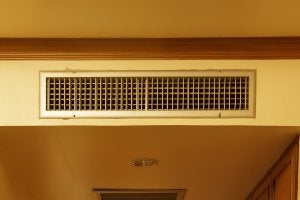
Your real estate agent isn’t an expert in air quality or the factors that can affect it. However, she can help you find professionals who can evaluate the house to provide you with insight into its air quality. Before buying a house, checking the indoor air quality should be considered essential. A standard house inspection will not necessarily catch potential problems, so it’s ideal to schedule a dedicated air quality inspection.
Does this home contain any lead-based paint or asbestos?
When the materials in a home contain lead or asbestos, they tend to be benign as long as the structure of the material is in good condition and left undisturbed. However, it’s important to ask your realtor about these two substances. Even if neither is a deal breaker for you, it’s essential that you be aware of the presence of lead-based paint and asbestos so you can keep an eye on the state of the containing materials. Additionally, lead and asbestos can affect your ability to safely remodel your home.
Are there any signs of mold in this home?
Mold is a contaminant that is found in many homes. While it may not cause serious problems in small amounts, the presence of mold can indicate a water leak or water damage in the building. Additionally, when not dealt with, mold can grow into a significant issue that can affect the health of your family, as well as ruin your belongings and harm the structure of the home. Finding out if the home inspector spotted mold can help you make a better-informed decision when you buy your new house.
RECENT POSTS
categories
- Uncategorized
- Lead
- Mold
- San Francisco Mold & Asbestos Removal
- Indoor Air Pollution
- Mold Remediation
- Asbestos
- Safe Air Fast
- Mold Inspection
- Remediation
- Bacteria Testing
- Asbestos Testing
- Abatement
- Lead Testing
- Sewer Line
- Lead Survey
- Mold Testing
- Air Quality Inspection
- Home renovations
- Allergies
- Renovation Contractor
- Infographic
- lead paint
- Air Quality
- Air Quality Test
- Mold removal
